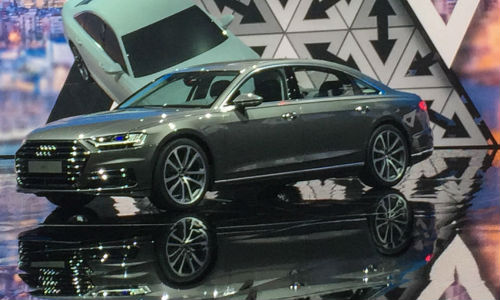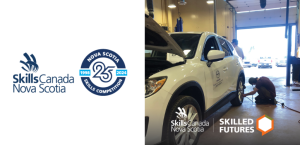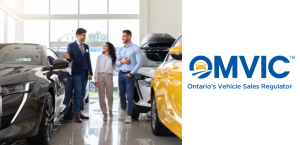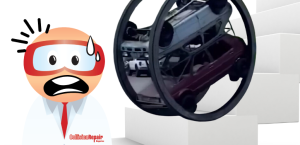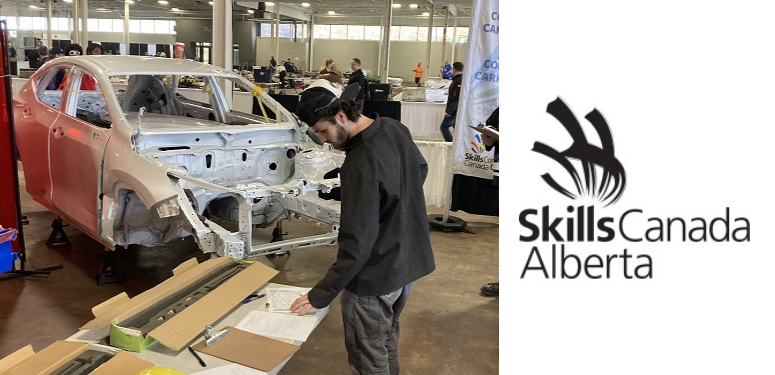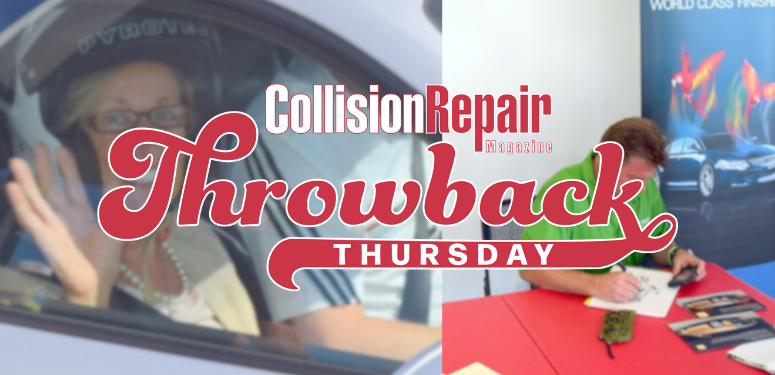By Jeff Sanford
Toronto, Ontario — July 23, 2017 — In this week’s Autonomous Report, we look at Audi’s launch of the world’s first commercially available level 3 autonomous vehicle (AV), why California is repainting its roads for AVs, a new company that will pay for your dashcan or cellphone videos and much, much more!
– Audi introduced the new A8 at an event dubbed the “Audi Summit.” Industry reporters were flown into Barcelona, Spain for the reveal at which the world’s first commercial vehicle to feature level 3 automation was introduced. The 2018 A8 is a sophisticated machine with an adaptive air suspension that utilizes optical cameras to read the road and light-based radar unit (LiDAR) generates a far better picture of what is around the vehicle than Teslas (which only use cameras).
According to Audi the A8 achieves, “… level 3 autonomous driving mode for highway traffic jams.” Level 3 autonomy, of course, means the, “… driver needn’t supervise things at all, so long as the car stays within guidelines.” In the case of the A8, the self-driving mode can only be engaged at speeds under 60 km/h. That is, it’s only for situations where cars are moving relatively slowly. Audi is calling the self-driving feature the AI Traffic Jam Pilot. If you’re caught in a traffic jam you can leave the driving up to the car and read a paper.
– The global accountancy firm KPMG has just published yet another report on AV-related changes in the auto insurance industry. There have been a few of these reports released now. Almost all the big consultancy and accounting firms have issued one. The big idea in the KPMG report is basically the same as all the others—the arrival of AVs will change the nature of the auto insurance sector as the number of accidents declines. Some of the interesting quotes, ideas and numbers from the report:
• “Insurance companies will have to make important strategic and tactical changes sooner than anticipated to navigate through this turbulent transformation of the industry.”
• “New business models bring about a decade or so of a ‘chaotic middle’ as insurers adjust their strategies and operations as autonomous vehicle technologies significantly deplete the need for personal auto insurance.”
• “… the number of auto accidents overall, and the share of accident claims funded by personal auto policies will also contract … Partially offsetting this, average repair costs will continue to increase at a higher rate than overall inflation as new technologies in future cars become more expensive to repair.”
• The $247 billion premium auto insurance marketplace [will contract]. Autonomous technology will make driving increasingly safe. “This is going to lead to a potential 90 percent reduction in accident frequency by 2050. OEMs … will assume more of the driving risk and associated liability, and [will] have new opportunities to provide insurance to car buyers, taking market share away from traditional insurers.”
• “… rapid adoption of mobility-on-demand is quickly translating into the need for less personal auto coverage, with the use of fleets requiring commercial auto insurance.”
• By 2024, the majority of travel within cities and surrounding suburbs is expected to be on-demand rather than with a personal vehicle. By 2035 it is expected to be the new normal in transportation.
• Product liability coverage and other new types of insurance are expected to pay a greater share of claims resulting from roadway accidents … Market participants are building new products to cover the potential hacking of autonomous vehicles.
• The report also notes that the current massive infusion of venture capital into the sector is, “… boosting the development of autonomous capabilities and related business models, thereby accelerating the pace at which highly automated vehicles will hit the market.”
– As mentioned in this space last week, a law is headed to Congress that would free a substantial number of AV from direct oversight by the US-based National Highway Traffic Safety Administration (NHTSA).
According to Reuters, “A US House panel on Wednesday approved a sweeping proposal by voice vote to allow automakers to deploy up to 100,000 self-driving vehicles without meeting existing auto safety standards and bar states from imposing driver-less car rules.” The Reuters’ report suggested this issue takes on urgency in light of recent collision trends. The story notes the recent surprising bit of statistical data that finds road deaths in the United States rose 7.7 percent in 2015 to 35,200. This was the highest annual jump since 1966. The report implies it seems odd that the government agency tasked with enforcing safety on the roads would have its authority weakened so sharply with respect to what is the biggest new trend in personal transportation since the invention of the car. The story also states that government data indicates that traffic deaths, “… climbed nearly 8 percent in the first nine months of 2016.”
– Malcolm Dougherty, California’s Department of Transportation Director, recently said in an interview with radio station KPCC that the state, “… [has] already begun modifying roadways to accommodate the way self-driving cars navigate.” According to Dougherty, “The automated vehicles can follow lane lines … They can’t follow the dots, so we’re actually changing our delineation standards to go away from the dots which we’ve been using for decades because AVs have a difficult time following those.”
The agency aims to have the state’s highways and interstates modified within the next two to three years. “All of our lane lines are going to get thicker,” he said. “Today our lane lines are only four inches thick. Now every lane line we lie down going forward is going to be six inches thick. I’ve already started to see some of this transition.”
– A new app called Payver offers drivers a chance to get paid for allowing the data to be streamed to the company. The firm offers a few pennies for each mile the driver travels with their phone pointed at the road and the camera turned on. The company uses the data to update the digital maps they are creating. According to a story by Wired, “Detailed, digital maps are widely considered an essential addition to the sensors [AVs] carry … [The data is] an extra source of information to complement the cameras, radars, and lidars scanning the road.” Of course, if these maps are going to be any good they need to know more than just street names road positions but they also need to know, “… the exact location of every stop sign, traffic light, lane line, and curb, down to the centimeter.” Which is where Payver comes in. By gathering up and combining the data from many thousands of vehicle cameras the resulting map will be highly detailed and accurate. Each subsequent driver on a stretch of road confirms the details or provides update according to the story; “In just 3 months, 500,000 miles of US roadway have been covered with Payver.”
– Nauto is another new company, this time launched by former Tesla engineers. Nauto’s technology is a two-way system that monitors a driver through their dashcam. According to a story on Electrek, “Level 5 autonomous driving shouldn’t require any input or attention from a driver, but level 3 and 4 would require a transition period between conditions in which the autonomous driving can and cannot drive. A certain level of attention would be required at that point, which is why people in the industry believe that driver-facing cameras would be needed. Their dashcam can recognize the driver and it monitors their gaze in order to know if they are paying attention. They also can detect dangerous moments and evaluate the driver’s reaction.” Nauto is trying to create this technology. GM, BMW and Toyota are all investing in the company.
– A series of stories have appeared over the last few weeks commenting on the promotion of Jim Hackett to the top spot at Ford. Hackett is being billed as the one who will bring Ford into the AV era. A story that appeared on MIT Technology Review contained some interesting quotes from Hackett that may providing clues to his thinking:
• “… the auto industry seems on the verge of a cyclical downturn in sales following six straight years of unit-sales increases, and following several years of poor stock performance for the company.”
• “… Ford, which has hundreds of its own people working on autonomous driving, needed still more talent in the driverless category and was willing to spend aggressively to get it. ‘The problem we have to solve–and there won’t be many bigger than this–is about picking large amounts of data, blades of grass being collected by a lawn mower travelling at 70 miles per hour, and organizing and making sense of all of it. It’s a much harder problem than the world realizes.”
• “Ford must step up its recruitment of scarce talent to a workforce that increasingly will be comprised of software engineers, experts in artificial intelligence, digital mapping specialists, and those with proficiency in sensing devices such as radar, LiDAR, and cameras …”
• “Today carmakers sell to … drivers through an extensive network of dealers, which makes profits both selling and servicing cars. In a world of self-driving vehicles, individuals could stop buying cars, and instead use fleets owned and operated by a third party. Ford and its competitors could become the manufacturer and third-party owner, a seller of rides as well as vehicles.”



